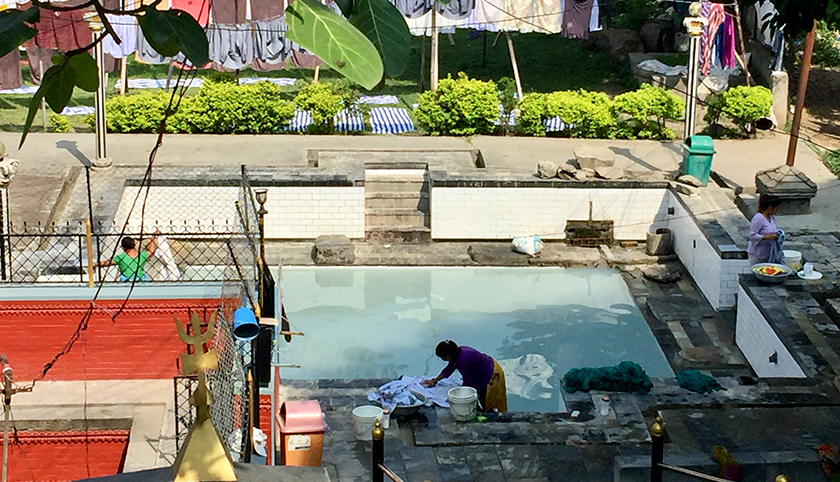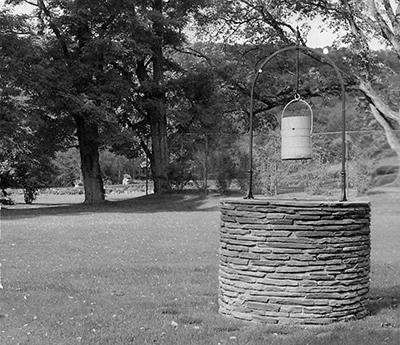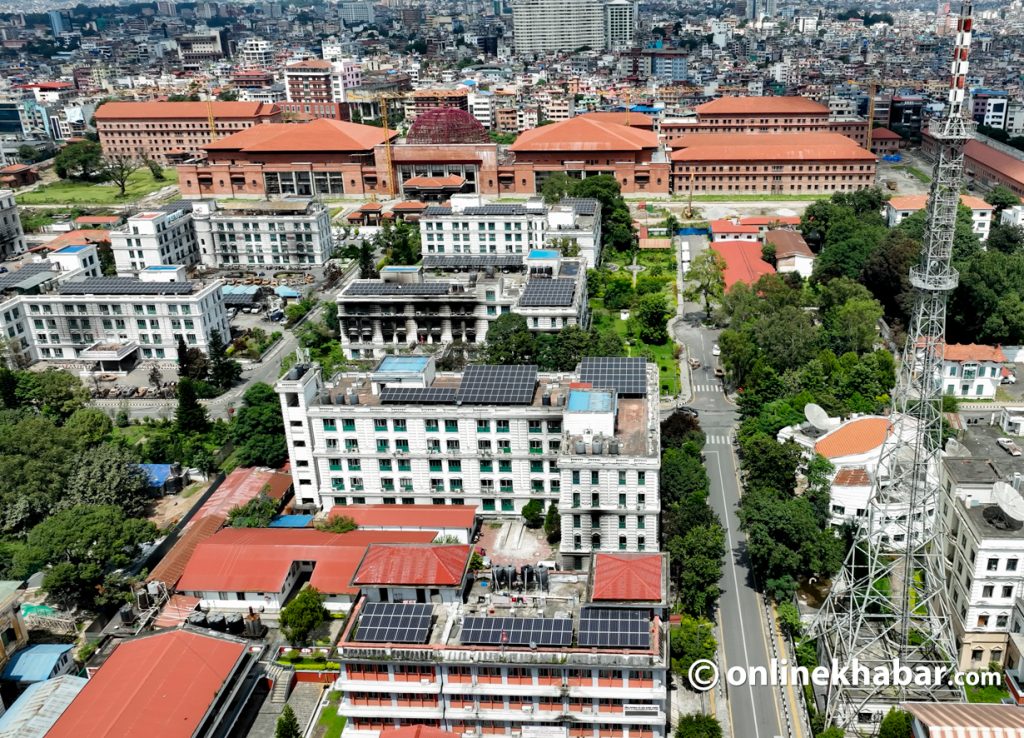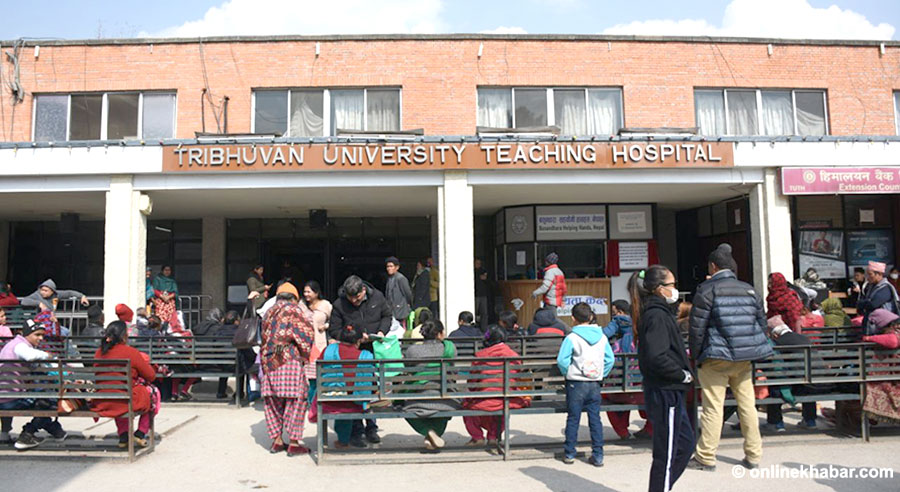
For the past decade, I’ve lived in the small village-within-a-city that you may know as Dhobighat. To be more precise, the dhunge dhara area of Lalitpur. While outsiders may know little about it, my neighbourhood includes two main dharas (where a whole lotta clothes-washing goes on), strung together by a mixed-use community of small shops, schools, and homes.
The upper dhara area is where I live, and it is relatively secluded, with no main thoroughfares dissecting the place. The dhobis are still in the business of washing clothes and bedsheets for all. However, I have anecdotal evidence that less and less of that is happening, and here’s what I think is going on…
The land on which wet sheets and towels are dried is itself drying up as fast as you can say ‘new construction.’
My flat used to overlook ropanis of rice paddy; an entire hillside that was once open space and full of sun all day long. Now, in just a few years’ time, that land has become just another neighbourhood full of houses just a metre or two apart from each other.
Towel drying has been regulated to rooftops and even trucked further afield from the dhara, where there is more open space. But more and more, undies and school uniforms are being dried by machines, especially now that the Valley has 24×7 electricity.

No one can say for sure how the washing business has suffered–statistics are non-existent–but while interviewing one of my dhobi neighbours, here is what I found out:
“Times are changing. Fewer youngsters are taking up the family business, and open drying space is an issue for everyone. However, the sun and the spring water do the best job, and our customers notice the difference (between machine washing and drying).”
Regardless the changing times, my community has been resilient and remains both a popular place to hang out and the scene of many a jatras and weddings– when the entire street is blocked off and our lane becomes one big open-air party palace.
It’s a strong community, despite the hardships endured by the average denizens. For example, during the 2015 Earthquake, it was the ‘group hug’ of the community that got me and so many others through the horror. Everyone pitched in to help: from rebuilding fallen walls to pitching temporary shelters in the rain, to comforting the young and frightened.
Luckily, everyone here was spared serious injury, but from my perspective, even if there had been more severe repercussions from the initial shock and subsequent tremors, this community would have done all it could to help any individual in need. It is a reassuring thought indeed.
Even today during this writing, there is the reassuring blare of a Nepali classic on someone’s boom box down at the dhara, mixed with the sounds of kids screaming and splashing away – on special days like today, everyone is allowed a free-for-all swim, and the dhara goes from community washing to community dipping.
The concept of the dhunge dhara is as old as Nepal itself, and represents the sanctity of water, as well as water’s vital, utilitarian use. For centuries, pokharis have been built by kings and paupers alike, as there is religious merit in distributing this liquid of life.
From what I’ve observed here in Dhobighat, this is certainly still the case. At any given hour of the day, one can find a didi visiting the dhara to fill water jugs, for both drinking and other uses at home. Fetching water is an act as old as any other in our collective human history, even if it is one that has all but dried up in western culture.

And it is for that reason (dealing with water is sacred, essential, and prime) that I worry. For example, I once lived on a farm in Upstate New York, where there was a well with a drawstring rope and bucket system that one would pull up fresh clean water for drinking, as well as for washing and filling a plastic kiddie pool during the summer.
While not public in 1970, this well was used as far back as the early 1800s, by any thirsty traveler on the way to the state capital, or by anyone needing a cool drink on a hot August day.
Most wells like this were once communal in America, but no more…
With the advent of piping, Americans became less dependent on well water, and more on water provided by municipalities, and in short, Americans lost that connection between water and mother earth, instead settling on twisting the kitchen or bathroom spigot for their most vital of liquids.
While convenient, this advance in technology is not particularly safe, as shown by recent developments in Flint Michigan and Washington DC, where lead levels have become so toxic, that folks are forced to drink (and even bath in) bottled water, or risk severe poisoning from their indoor plumbing and/or municipal water source. Even that childhood farm well I mentioned, is now shuttered due to polluted ground water.
In comparison, Kathmandu city water is currently no safer, yet I meet folks here in Dhobighat all the time who still drink dhara water right from the tap, without even a boil first. When asked how they know it’s safe, the answer is ‘faith’.
This brings me to the major question of this essay: considering the spiritual nature of water, flowing from the snake’s mouth and all of that, is there a connection between our disconnection with free-flowing water and the disintegration of culture as we know it?
For example, will the Melamchi Water Supply Project, once it starts piping new water to each of our homes, in some way change our relationships with each other? Will didi be happier with a mechanical washing machine and dryer, or will she miss doing the wash with friends chit-chatting down at the dhara?
Will communal taps and dharas within the valley become obsolete and abandoned, once everyone has water piped directly to their homes? What will change in Nepali culture without the dhunge dhara?
Leave us your thoughts below…
Jigs Gaton is a quirky-kinda migrant worker, hailing from America and happily living in Dhobighat with family, friends and a 40kg dog. He loves his neighborhood dhara, and feels it should be protected at all costs.
Photos: Jigs Gaton





















